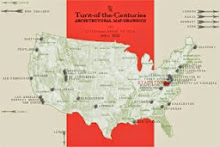
 I've enjoyed a (well-deserved) break today. I'll call it a SNOW DAY because, indeed, it snowed today in Washington DC! I haven't witnessed this phenomenon in a long time, living in Savannah. I didn't know whether to be excited or worried. I was too chicken to drive on snowy streets so I enjoyed a white walk to the post office to mail t.o.t.c. packages today (with the added bonus of talking with my friend in Paris while I walked the winter wonderland.) So, I took some quiet time to design this year's Christmas card.
I've enjoyed a (well-deserved) break today. I'll call it a SNOW DAY because, indeed, it snowed today in Washington DC! I haven't witnessed this phenomenon in a long time, living in Savannah. I didn't know whether to be excited or worried. I was too chicken to drive on snowy streets so I enjoyed a white walk to the post office to mail t.o.t.c. packages today (with the added bonus of talking with my friend in Paris while I walked the winter wonderland.) So, I took some quiet time to design this year's Christmas card.I have been listening to Handel's MESSIAH for the past several months. Lately, it's been an obsession. When I'm not listening, the epic phrases from Isaiah and Matthew, Luke and Malachi run through my head along with the dynamic melodies. For the past five years, the evergreen Christmas tree has been a constant element in my cards. So...how to combine the Messiah and the quintessential evergreen? While listening to Handel's masterpiece, I arranged the most powerful phrases into form. Voila. In the spirit of thrift and efficiency, these are 5 1/2" x 8" postcards.
 The trees of Christmases Past
The trees of Christmases Past The story of Handel's composition of MESSIAH is also quite inspiring: Click HERE to read.
































